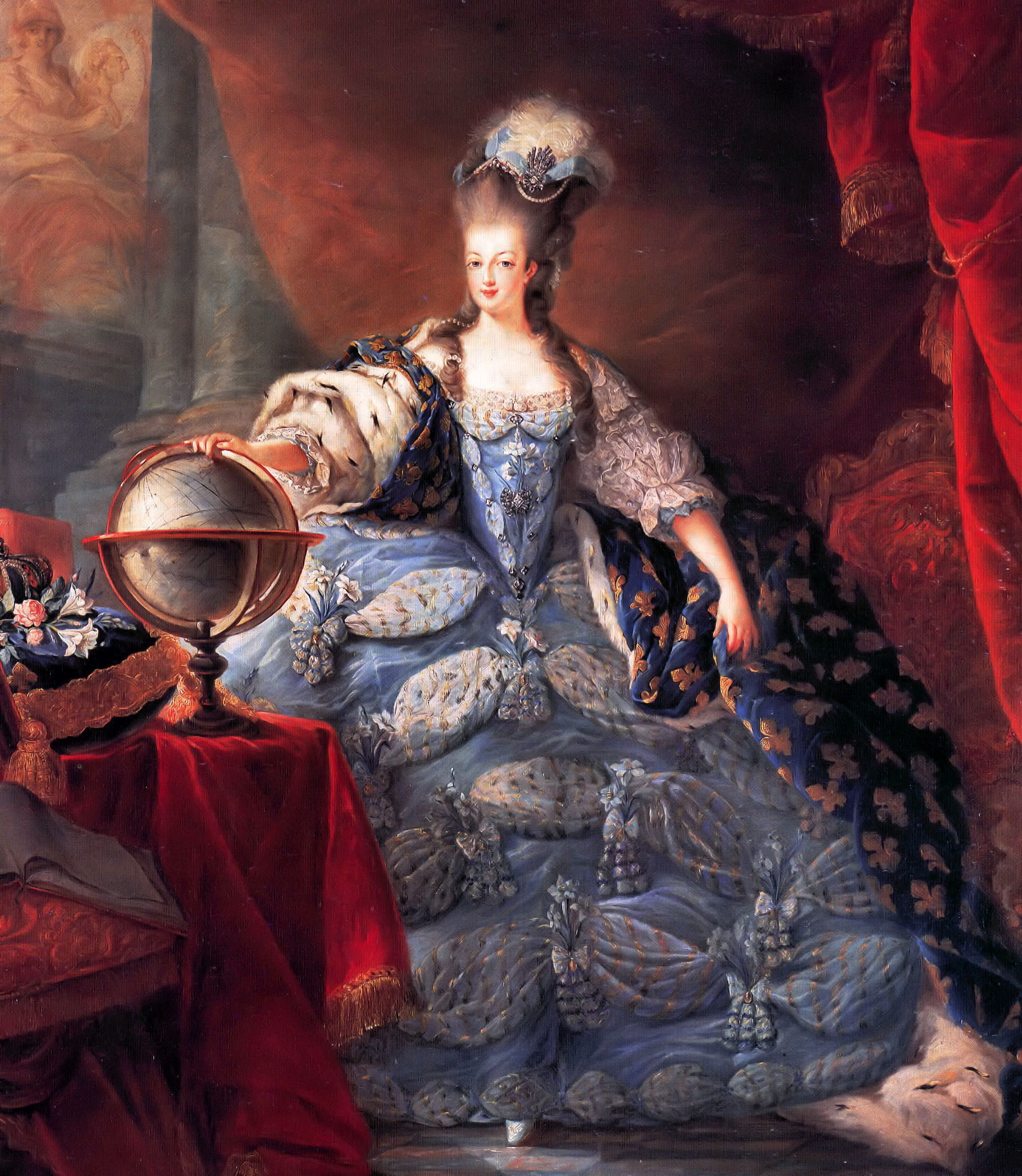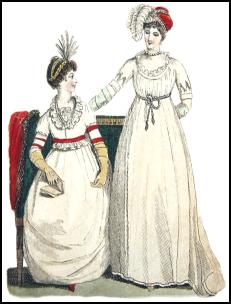It is hard to know maybe when did lolita exactly started, there are some who think the 70’s was the start, others the 80’s. But is not hard to know where it got the inspiration from. We all know lolita mixes stuff from historical fashion with modern aspects such as the 50’s. If we look at the dresses we can instantly feel the reminiscence of those fantastic years.we have to start waaaaay back
Elizabeth I Era Elizabeth I Queen of England 1558-1603
Queen Elizabeth was a great follower of fashion. While in private she preferred to wear simple gowns, and would reputedly wear the same plain gown for two or three days, when she was in public, she dressed to impress. Clothes were an important status symbol to the Elizabethans, and a person had to dress in accordance with their social status. It was thus in keeping that the Queen dressed more magnificent than everyone else. No one was allowed to rival the Queen’s appearance, and one unfortunate maid of honour was reprimanded for wearing a gown that was too sumptuous for her.Like all aristocratic Elizabethan women, the Queen would typically wear a chemise, a corset stiffened with wood or iron, a petticoat, a fathingale, stockings, a gown, sleeves, and a neck ruff and wrist ruffs. With the discovery of starch, ruffs became even more elaborate.

 Baby the stars shine bright
Baby the stars shine bright
Rococo 1774-1793 Probably the most craved era in lolita fashion, the Rococo style of art emerged in France in the early 18th century. It is characterized by opulence, grace, playfulness, and lightness in contrast to the heavier themes and darker colors of the earlier Baroque period.As for fabrics, , lightweight silks such as taffeta, satin and damask were chosen in light, pastel colours. Colours must not be too brilliant. Tastes were for large floral motifs at first, then favoured smaller motifs and finally, stripes sprinkled with sprigs. Solid colours were also popular throughout.
Probably the most craved era in lolita fashion, the Rococo style of art emerged in France in the early 18th century. It is characterized by opulence, grace, playfulness, and lightness in contrast to the heavier themes and darker colors of the earlier Baroque period.As for fabrics, , lightweight silks such as taffeta, satin and damask were chosen in light, pastel colours. Colours must not be too brilliant. Tastes were for large floral motifs at first, then favoured smaller motifs and finally, stripes sprinkled with sprigs. Solid colours were also popular throughout.
 Mary Magdalene
Mary Magdalene
 Baby the stars shine bright
Baby the stars shine bright
Regency Era1800-1825 This was one of the mayor changes in the female silhouette, since the french revolution the French textile industry had suffered and unlike in England, use of textile machinery had been non existent. The Empire dress which evolved in the late 1790s began as a chemise shift gathered under the breasts and at the neck.By 1799 the empire line silhouette shown left was well established and is the line we associate with dress of the early 1800s.Regency dress in the period 1800-1820 was based on classical principles of flowing Grecian robes.n 1815 with the Napoleonic wars over, Britain began to follow French fashion trends for wearing a high waistline. The waistline reached its peak height in 1816-17 when the line fell directly under the breasts. Almost as soon as the waist had risen, 1818 fashion plates began to show the waistline dropping and tightening. It continued to drop annually by an inch, until by 1825 it was at last in its normal position.
This was one of the mayor changes in the female silhouette, since the french revolution the French textile industry had suffered and unlike in England, use of textile machinery had been non existent. The Empire dress which evolved in the late 1790s began as a chemise shift gathered under the breasts and at the neck.By 1799 the empire line silhouette shown left was well established and is the line we associate with dress of the early 1800s.Regency dress in the period 1800-1820 was based on classical principles of flowing Grecian robes.n 1815 with the Napoleonic wars over, Britain began to follow French fashion trends for wearing a high waistline. The waistline reached its peak height in 1816-17 when the line fell directly under the breasts. Almost as soon as the waist had risen, 1818 fashion plates began to show the waistline dropping and tightening. It continued to drop annually by an inch, until by 1825 it was at last in its normal position.
 Baby the stars shine bright
Baby the stars shine bright Atelier boz
Atelier boz

 Princess dollVictorian Era1837 -1901
Princess dollVictorian Era1837 -1901 This is the longest period of all, and because of that there are several “stages”. Queen Victoria reigned from 1837 to 1901 and was succeeded by her 60 year old son Edward the Prince of Wales. At the start of the Victorian era most fashions lasted about a decade, but mass communications and mass production both improved so much that by 1901 the history of fashion was moving in a yearly cycle.
This is the longest period of all, and because of that there are several “stages”. Queen Victoria reigned from 1837 to 1901 and was succeeded by her 60 year old son Edward the Prince of Wales. At the start of the Victorian era most fashions lasted about a decade, but mass communications and mass production both improved so much that by 1901 the history of fashion was moving in a yearly cycle. In the 1840’s, extra flounces were added to skirts and women wore a short over-skirt in day dressing. Skirts widened as the hour glass silhouette became The Look and women took to wearing layers of petticoats. Bodices took on a V shape and the shoulder dropped more.(like in the pic above)The early Victorian tight fitting pointed bodice was much longer and had a very small tight fitting waist. All the boned bodice seam lines and trims were directional to emphasize the small waists.By 1845 the boned bodice was even more elongated into a V shape and the shoulder sleeve seam line drooped even more.
In the 1840’s, extra flounces were added to skirts and women wore a short over-skirt in day dressing. Skirts widened as the hour glass silhouette became The Look and women took to wearing layers of petticoats. Bodices took on a V shape and the shoulder dropped more.(like in the pic above)The early Victorian tight fitting pointed bodice was much longer and had a very small tight fitting waist. All the boned bodice seam lines and trims were directional to emphasize the small waists.By 1845 the boned bodice was even more elongated into a V shape and the shoulder sleeve seam line drooped even more. 1850In the 1850’s, the dome shaped skirt switched to tapered skirts that flared at the waist. The new hour glass figure grew to exaggerated proportions. In the 1850’s, a cage like affair replaced the multi-layered petticoats. Called hoop-skirts, cage crinolines, or cages, they were light weight, economical and more comfortable than the heavy crinolines.Sleeves were often tight at the top, opening at the bottom in a bell-like shape.
1850In the 1850’s, the dome shaped skirt switched to tapered skirts that flared at the waist. The new hour glass figure grew to exaggerated proportions. In the 1850’s, a cage like affair replaced the multi-layered petticoats. Called hoop-skirts, cage crinolines, or cages, they were light weight, economical and more comfortable than the heavy crinolines.Sleeves were often tight at the top, opening at the bottom in a bell-like shape. The mass production of sewing machines in the 1850’s as well as the advent of synthetic dyes introduced major changes in fashion. Previously, clothing was hand sewn using natural dyes. Other new development included the introduction of the sized paper pattern as well as machines that could slice several pattern pieces at once. Clothing could now be produced quickly and cheaply.
The mass production of sewing machines in the 1850’s as well as the advent of synthetic dyes introduced major changes in fashion. Previously, clothing was hand sewn using natural dyes. Other new development included the introduction of the sized paper pattern as well as machines that could slice several pattern pieces at once. Clothing could now be produced quickly and cheaply. 1861By 1867 with the fullness bunched up to the back of the skirt creating a polonaise style, crinolines and cages suddenly disappeared evolving into tournures or bustles. The bustles supported accentuated drapes on the hips.
1861By 1867 with the fullness bunched up to the back of the skirt creating a polonaise style, crinolines and cages suddenly disappeared evolving into tournures or bustles. The bustles supported accentuated drapes on the hips. From 1870, ball gowns always had a train. Soon by 1873 the train was seen in day dress.By 1878, women of the late Victorian era have a very different look about them compared to earlier Victorian women.
From 1870, ball gowns always had a train. Soon by 1873 the train was seen in day dress.By 1878, women of the late Victorian era have a very different look about them compared to earlier Victorian women. Suddenly out of nowhere in 1883 a new jutting out shelf like style of bustle appeared. It had been shown in Paris in 1880, but as a fashion took off later outside of Paris
Suddenly out of nowhere in 1883 a new jutting out shelf like style of bustle appeared. It had been shown in Paris in 1880, but as a fashion took off later outside of Paris by 1890 Gradually the skirt widened and flared as the fullness of the bustle began to fall into pleats down the garment back eventually disappearing to nothing. As before the bustle foundation softened until only a small pad was left by 1893. The armour like hour glass figure soon developed into the S-Bend shape corset which set the Edwardian Corsetry silhouette until 1907-8.
by 1890 Gradually the skirt widened and flared as the fullness of the bustle began to fall into pleats down the garment back eventually disappearing to nothing. As before the bustle foundation softened until only a small pad was left by 1893. The armour like hour glass figure soon developed into the S-Bend shape corset which set the Edwardian Corsetry silhouette until 1907-8.
 Mary Magdalene
Mary Magdalene
 Victorian Maiden
Victorian Maiden atelier pierrot
atelier pierrot
 innocent world
innocent world Baby the stars shine brightthe beginning of the century also brought new trends and styles. but i’ll leave that to another post, we don’t need to go back hundreds of years, we can bring those delightful ages up to the present.I like to think i’m wearing history even if i look around and everything is different.i hope you enjoyed it and comment if you did.thanks for readingSourceshttp://www.elizabethi.org/uk/http://www.fashion-era.com/http://hubpages.com/http://www.costumes.org/
Baby the stars shine brightthe beginning of the century also brought new trends and styles. but i’ll leave that to another post, we don’t need to go back hundreds of years, we can bring those delightful ages up to the present.I like to think i’m wearing history even if i look around and everything is different.i hope you enjoyed it and comment if you did.thanks for readingSourceshttp://www.elizabethi.org/uk/http://www.fashion-era.com/http://hubpages.com/http://www.costumes.org/


Thanks for the very informative post! It reminds me of your blog's title (not too surprising I guess lol). Oh man, I think that first black OP just went on my dream dress list…
Dude, Queen Elizabeth was where it was AT. Haha, okay well I'm just a huge history nerd for her, but I really think her fashion choices were some of the most interesting in the pastGreat post!
Great post